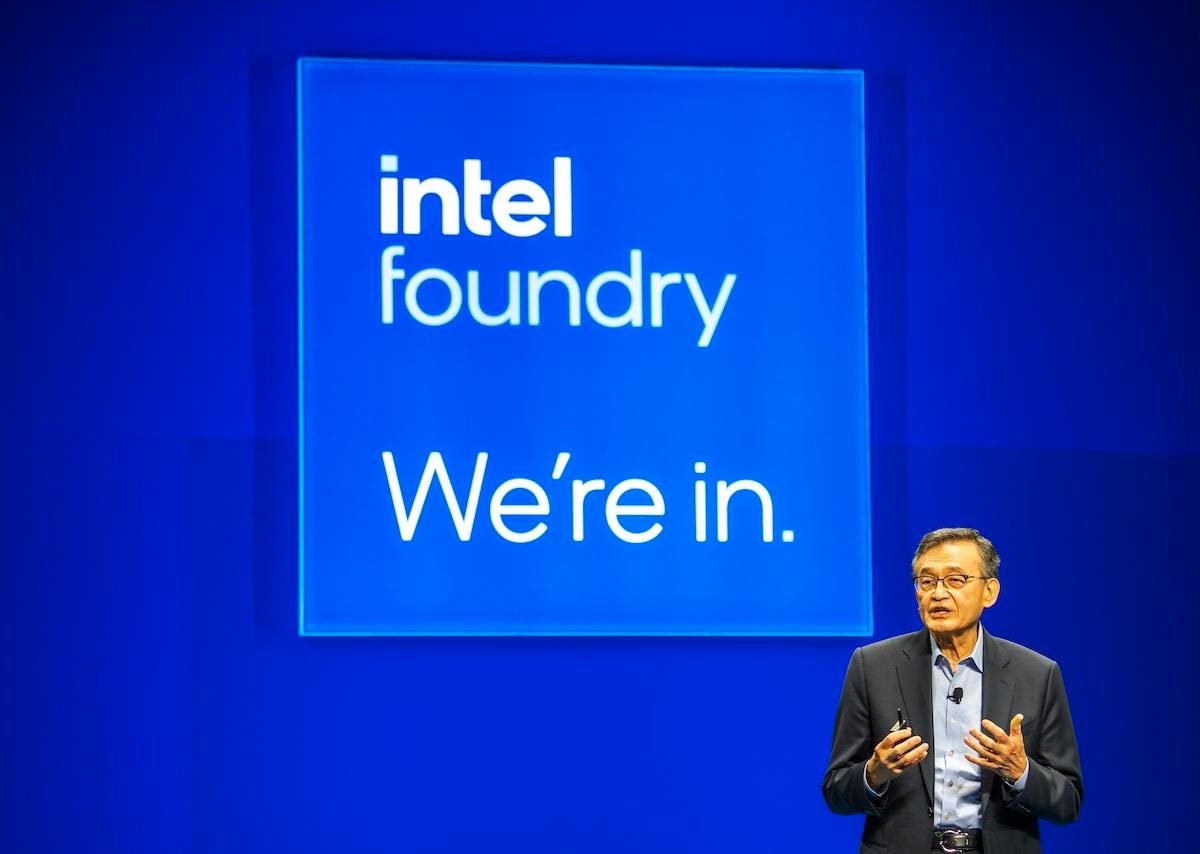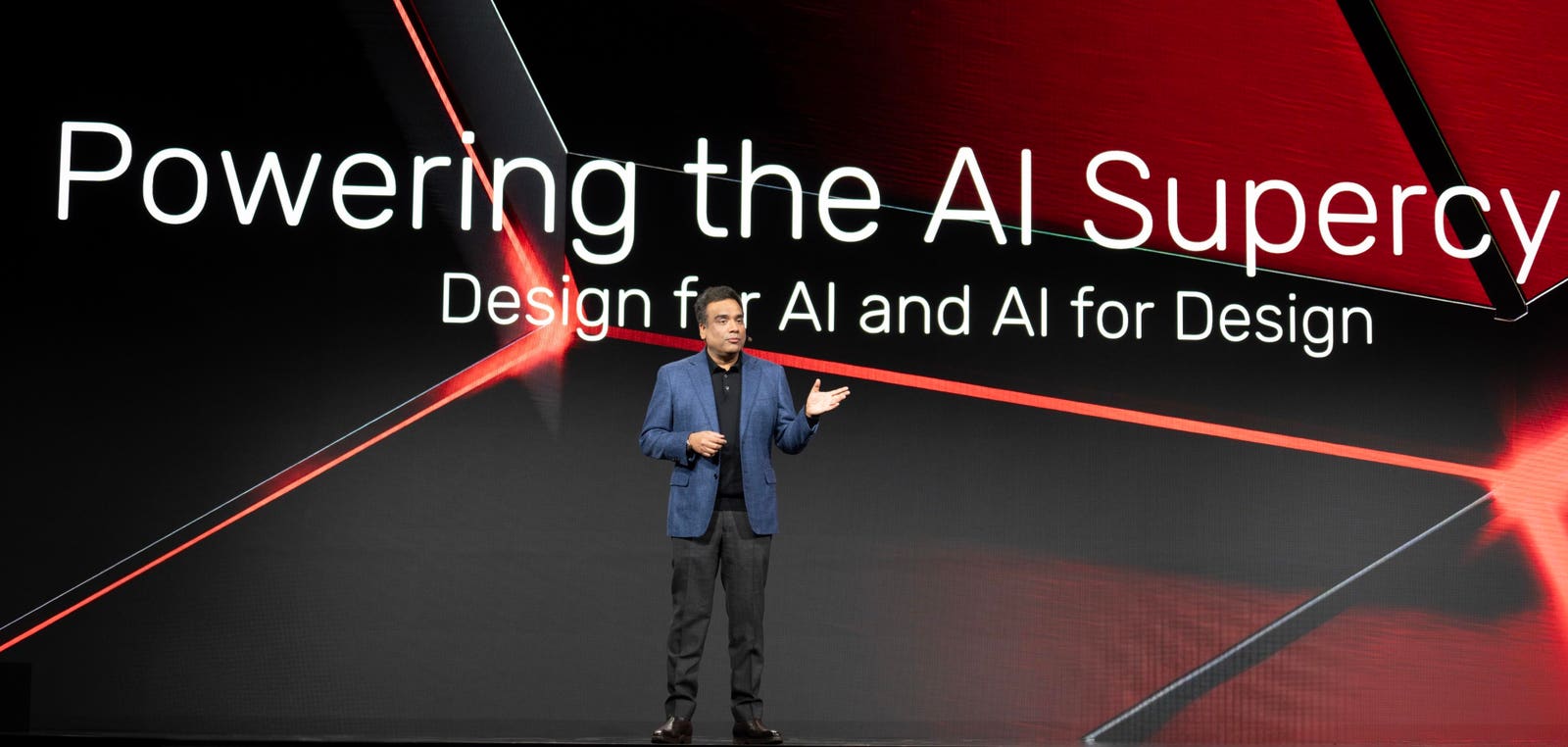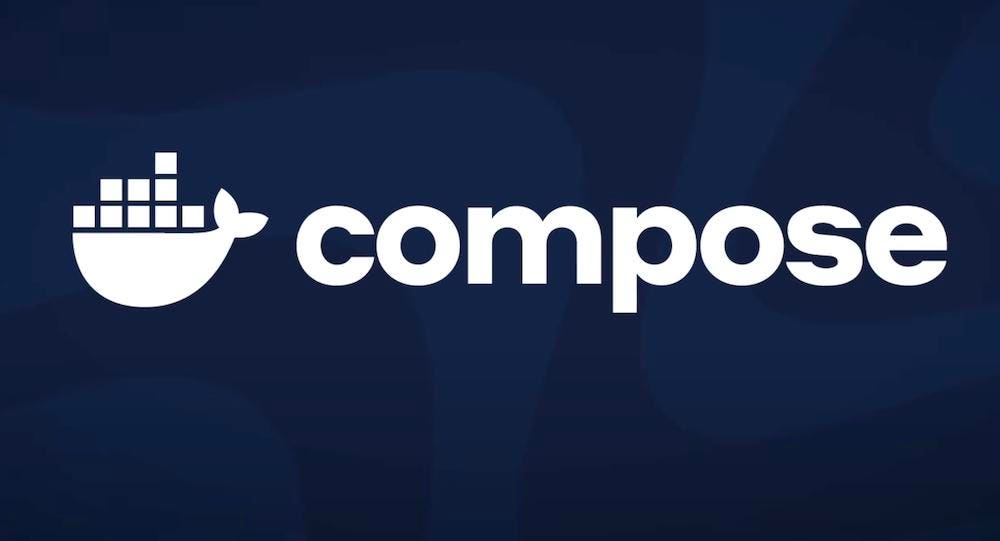Intel CEO Lip-Bu Tan delivers the opening remarks for Intel Foundry Direct Connect 2025.
At Intel’s annual Direct Connect conference, the company’s CEO and foundry leadership team laid out the future of the company’s foundry business. Intel Foundry Services is the chip manufacturing arm of Intel and has been one of the areas of the company that has needed a significant turnaround to enable Intel’s future success. (Note that Intel is a client of my firm, Moor Insights & Strategy.)
One of former CEO Pat Gelsinger’s efforts was the delivery of four production nodes in five years, also known as 4N5Y. This was needed because Intel once had a foundry advantage over companies like TSMC, but eventually — through a series of mistakes, delays and lack of execution — it squandered that lead. Later this year, Intel will begin to deliver chips made on production node 18A to customers; volume shipments will begin early next year. Node 18A is the fifth node in five years, if you’re counting by the timetable that Gelsinger set when he started the turnaround.
Gelsinger left as CEO late last year; he was replaced by former board member Lip-Bu Tan earlier this year, and it seems so far that Tan will continue to execute on Gelsinger’s overall strategy, but seemingly with even more focus — yet fewer employees. While Intel’s headcount and layoff numbers under Tan are not official yet, there is an expectation that he will run the company with a leaner balance sheet and a smaller payroll.
The other upside of Intel delivering 18A is that it will demonstrate Intel’s competitiveness both on a product front with chips like the Panther Lake processor, but also on a foundry front in terms of how that product leverages the new node. While it remains unclear how much 18A capacity Intel has available to serve third-party customers, there are no illusions about Intel’s need to win foundry customers to enable IFS to scale to a point of profitability. After all, chip fabs cost billions of dollars and depreciate extremely quickly, so the only good way to turn a profit is through high utilization and volume. While there is no doubt that Intel will fill a lot of the capacity making its own products, Intel alone will not be able to sustain IFS’s ambitions of growth.
Updates Beyond The 18A Process Node
Thanks to the Intel Vision event earlier this year, we already know that Intel has moved 18A into risk production, which means that the node is where Intel expects it to be, and that Intel has locked in the node for mass production. There will still be improvements made to 18A to make it fully mass-production ready and commercially available, but Intel’s own timeframes for the node indicate it will be ready on schedule, with volume production early next year as mentioned above. This means that we should get some real idea of the state of 18A and Panther Lake around then. So, Intel Foundry’s next biggest job at this point is to talk to customers and the industry about what happens beyond 18A.
Naga Chandrasekaran, Intel Foundry CTO/COO, on stage with a 14A test wafer.
Tan addressed this need at Direct Connect by continuing to talk about Intel’s customer-centric approach and about listening to what customers want and need. This is also why Intel brought both Cadence and Synopsis onstage to talk about how they are working together to enable faster time-to-market with new silicon designs for Intel Foundry. Intel also brought out Amkor, QuickLogic, Siemens EDA and PDF Solutions to represent the ecosystem of partners enabling designs for Intel Foundry. Many of the partnerships included Intel’s 18A and 18A-P processes, but also its packaging technologies like EMIB.
Intel Foundry’s updated roadmap
Some of the partner conversations also included Intel’s new 14A and 14A-E nodes. During Direct Connect, Intel Foundry’s executive team announced a slew of details about the upcoming 14A, including the availability of its process design kit. Intel says that 14A will build on the learnings from 18A, including the second generation of its RibbonFET technology — a gate-all-around architecture that debuted in node 20A.
Intel says that it expects 14A to deliver about 15% to 20% more performance per watt than 18A, and to enable a potential power savings of 25% to 35%. 14A will also feature the next generation of Intel’s PowerVia backside power delivery with PowerDirect, which is a unique form of power delivery. Intel also announced that there would be a 14A-E node, which will be geared to producing more efficient chips than 14A that are optimized for mobile applications. It’s the 14A-E node that I expect could lead a company like Apple or Qualcomm to adopt Intel Foundry — for extra capacity, but also potentially to stave off the never-ending TSMC price increases.
In addition to the updates on 14A and 14A-E, the Direct Connect audience also heard about new versions of 18A — specifically 18A-P and 18A-PT, both of which both build on 18A but with added power scaling and, in the case of 18A-PT, more advanced packaging options such as 3-D stacking. 18A-PT is much further out on the roadmap, with Intel saying it won’t be available until 2028.
I believe that Intel 18A-P (scheduled for 2026) will be one of the first nodes that Intel Foundry will announce customers for, which would help to build confidence in Intel’s roadmap. To get there, the company still needs to get 18A out the door at the end of this year and ramp that production early in 2026. I do think it was very telling when Intel said that 18A-P customers can easily port their 18A designs to the new node, which makes me think that the company has made adjustments in that direction based on customer feedback. Intel also said that it already has 18A-P running in the fabs, which makes me believe that Intel Foundry is already working on customer silicon. 18A-P is supposed to deliver an 8% performance-per-watt improvement over 18A with the same density. Intel also announced system integration that enables customers to mix 14A dies with 18A-PT using Foveros Direct 3D or EMIB.
Analyst Takeaways From Intel Foundry Direct Connect
I believe that Intel Foundry is going to deliver on the 5N4Y promise that Pat Gelsinger made when he started the turnaround of Intel. While I don’t believe that 18A will complete the company’s turnaround, I do think it’s an important inflection point for Intel to show the industry it is back to executing at a high level and doing it on schedule. Reliability is extremely important in the silicon industry, especially now that AI infrastructure is becoming critical for companies’ long-range plans.
It still remains unclear which customers will use which nodes from Intel, but I believe that we’ll start to see early customers on 18A-P and potentially even more on 14A and 14A-E. Intel’s Panther Lake and Nova Lake product lines will help Intel Product catch up with the rest of the industry and become more competitive. At this point, Tan’s most important job is to continue to execute and deliver while also listening to customers’ demands, within reason. He has an extremely difficult job, but I believe that he understands that the company was already on the right trajectory, and to take it away from that would be a fool’s errand.
Everyone knows that Intel Foundry’s success will be dependent on Intel’s ability to attract new customers and ensure that those customers can field competitive products. Intel Foundry will need to sign some of the biggest fabless chip companies in the world to achieve the scale that the company needs, but it also seems that Intel is positioning itself so it can be prepared to expand the capacity of its facilities if the demand warrants it. Bringing up new capacity is hard, but bringing up entirely new foundries and facilities would be even harder.
Intel Foundry likely still has a few years of hard work until it can turn a profit for the company, but there are going to be many opportunities along the way to see that it is moving in the right direction. If Intel executes well, I don’t think it will take more than a couple of years for us to see those signs.
Moor Insights & Strategy provides or has provided paid services to technology companies, like all tech industry research and analyst firms. These services include research, analysis, advising, consulting, benchmarking, acquisition matchmaking and video and speaking sponsorships. Of the companies mentioned in this article, Moor Insights & Strategy currently has (or has had) a paid business relationship with Cadence, Intel, Qualcomm and Synopsys.









